Today, 50 years ago (a Friday then), members of 6903 graduated from NAVOCS and were commissioned Ensigns. Being mid-February, indeed Valentine’s Day, we were back in Building 1801 for the exercise.
It started at 1100. We heard speeches and more speeches. Chaplain McMorrow gave the invocation and Rear Admiral Van Arsdall, commander of the Newport Naval Base, made “introductions.” Captain Moul, commanding officer of NAVOCS and the Naval Schools Command, offered “remarks.” Our student speaker was William Martens, from Oscar Company.
Rear Admiral Raymond Peet, Commander, Amphibious Training Command, US Atlantic Fleet, gave the graduation address, presented certificates to honor graduates, and conducted the commissioning oath.
 I, [name], do solemnly swear that I will support and defend the Constitution of the United States against all enemies, foreign and domestic; that I will bear true faith and allegiance to the same; that I take this obligation freely, without any mental reservation or purpose of evasion; and that I will well and faithfully discharge the duties of the office on which I am about to enter. So help me God.
I, [name], do solemnly swear that I will support and defend the Constitution of the United States against all enemies, foreign and domestic; that I will bear true faith and allegiance to the same; that I take this obligation freely, without any mental reservation or purpose of evasion; and that I will well and faithfully discharge the duties of the office on which I am about to enter. So help me God.
Then we listened to the Officer Candidate Choir sing the Navy Hymn and the OC Band play the National Anthem . . . and it was over. Off to duty assignments. But, first, the first salute.
Apparently, the “first salute” tradition dates back to the 19th century and it involves a newly commissioned officer giving to the enlisted who first renders him a salute a silver dollar. I don’t recall that we were that specific or generous. I recall giving someone — likely a Chief Petty Officer who worked with officer candidates — a regular dollar bill. Anyone do differently? I’m pretty sure the scene in the photo below didn’t count.

I don’t remember details of this day at all. So how did all those details at the beginning of this post get there? In one of those weird occurrences that make me wonder about cosmic influences, I was looking yesterday for my Navy medical records to check about the vaccinations we received. In the course of separating a piece of paper from the pile, probably for the first time in decades, I saw something I had no recollection that I possessed. It was the program from our graduation and commissioning exercises. !?

Here’s a gallery of pages from that program. It’s on autoplay. You can advance by clicking on the image in the direction you want and pause by hovering.
On the day before graduation, we received an honorable discharge from the Navy as enlisted men. Here’s is my discharge.

We also received a “diploma” from OCS.

After the oath, we were Ensigns. I guess the next day, one of the bigger changes from that status went into effect. We began to be paid at a monthly rate of $343.20, plus we began to receive the monthly Basic Allowance for Subsistence (BAS), which was $47.88. The new monthly total for our compensation came to $391.08, an increase of 73 percent over our pay as Officer Candidates Under Instruction. The BAS, however, meant that, as officers, we weren’t going to get food for free anymore. We would pay cash until we joined an Officers Mess, which, in my experience, bought the cheapest food possible so that the members could keep the maximum amount of that $47.88.
 At right is my commission. Under the title “The President of the United States of America” and the Seal of the United States, it reads: “To all who shall see these presents, greeting: Know Ye, that reposing special trust and confidence in the patriotism, valor, fidelity and abilities of William Michael McDonald I do appoint him a Reserve Officer in the grade of Ensign, Special Duty (Intelligence) United States Navy to rank as such from the Fourteenth day of February, nineteen hundred and Sixty-Nine. This Officer will therefore carefully and diligently discharge the duties of the office to which appointed by doing and performing all manner of things thereunto belonging. And I do strictly charge and require these Officers and other personnel of lesser rank to render such obedience is as due an officer of this grade and position. And this Officer is to observe and follow such orders and directions from time to time as may be given by me or the future President of the United States of America or other Superior Officers acting in accordance with the laws of the United States of America. This commission is to continue in force during the pleasure of the President of the United States of America for the time being, under the provisions of those public laws relating to Officers of the Armed Forces of the United States of America and the component thereof in which this appointment is made. Done at the City of Washington, this Second day of December in the year of our Lord one thousand nine hundred and Sixty-Eight, and of the Independence of the United States of America the one hundred and Ninety-Third. — Effective: Date Accepted — By the President: Charles K. Duncan Vice Admiral, U.S. Navy Chief of Naval Personnel — Paul R. Ignatius Secretary of the Navy.”
At right is my commission. Under the title “The President of the United States of America” and the Seal of the United States, it reads: “To all who shall see these presents, greeting: Know Ye, that reposing special trust and confidence in the patriotism, valor, fidelity and abilities of William Michael McDonald I do appoint him a Reserve Officer in the grade of Ensign, Special Duty (Intelligence) United States Navy to rank as such from the Fourteenth day of February, nineteen hundred and Sixty-Nine. This Officer will therefore carefully and diligently discharge the duties of the office to which appointed by doing and performing all manner of things thereunto belonging. And I do strictly charge and require these Officers and other personnel of lesser rank to render such obedience is as due an officer of this grade and position. And this Officer is to observe and follow such orders and directions from time to time as may be given by me or the future President of the United States of America or other Superior Officers acting in accordance with the laws of the United States of America. This commission is to continue in force during the pleasure of the President of the United States of America for the time being, under the provisions of those public laws relating to Officers of the Armed Forces of the United States of America and the component thereof in which this appointment is made. Done at the City of Washington, this Second day of December in the year of our Lord one thousand nine hundred and Sixty-Eight, and of the Independence of the United States of America the one hundred and Ninety-Third. — Effective: Date Accepted — By the President: Charles K. Duncan Vice Admiral, U.S. Navy Chief of Naval Personnel — Paul R. Ignatius Secretary of the Navy.”
Except for name, designation, and, I believe, the date the commission was “done,” all our commissions read the same. I mention the date the commission was “done,” because in this instance the “Second day of December in the year of our Lord one thousand nine hundred and Sixty-Eight” was my 22nd birthday. I doubt all the commissions were issued on the birthday of the individual; in which case, how special!
After the ceremonies on this date 50 years ago, I think I pretty much just packed up, headed out to the parking lot, and drove home. I certainly hope I took the time to say farewell to my A6903 classmates. They were a special group of young men, with whom I am proud to have been affiliated. I salute them!
I was next to attend Intelligence training at the Fleet Operational Intelligence Training Center in Norfolk, Va. I’m sure we had a little bit of leave and travel time before reporting for duty. No longer Officer Candidates, we were now real Navy.
 Michael D. McCance was from Las Vegas, Nevada, and came to OCS after graduating from the University of Nevada.
Michael D. McCance was from Las Vegas, Nevada, and came to OCS after graduating from the University of Nevada. The Coast Guard said there was no explanation of why the two men were missing or why the boat should have sunk as there was no indication of damage to the 25-foot craft.
The Coast Guard said there was no explanation of why the two men were missing or why the boat should have sunk as there was no indication of damage to the 25-foot craft.

 I, [name], do solemnly swear that I will support and defend the Constitution of the United States against all enemies, foreign and domestic; that I will bear true faith and allegiance to the same; that I take this obligation freely, without any mental reservation or purpose of evasion; and that I will well and faithfully discharge the duties of the office on which I am about to enter. So help me God.
I, [name], do solemnly swear that I will support and defend the Constitution of the United States against all enemies, foreign and domestic; that I will bear true faith and allegiance to the same; that I take this obligation freely, without any mental reservation or purpose of evasion; and that I will well and faithfully discharge the duties of the office on which I am about to enter. So help me God.

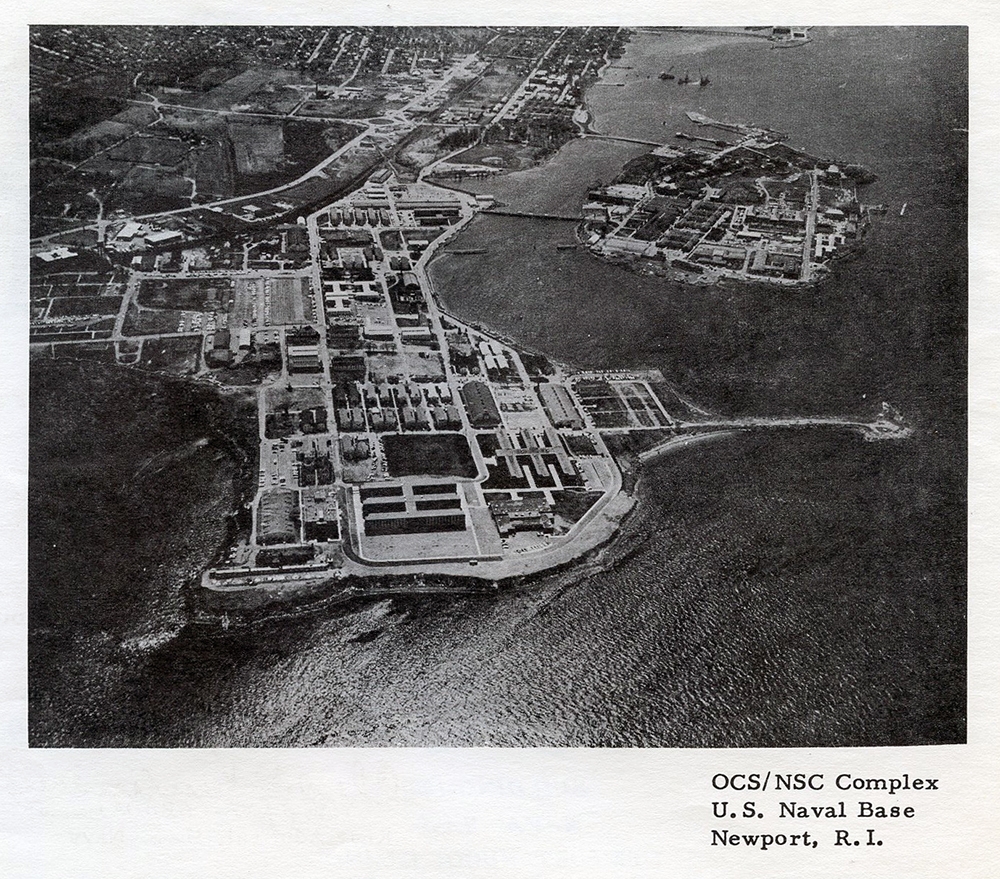
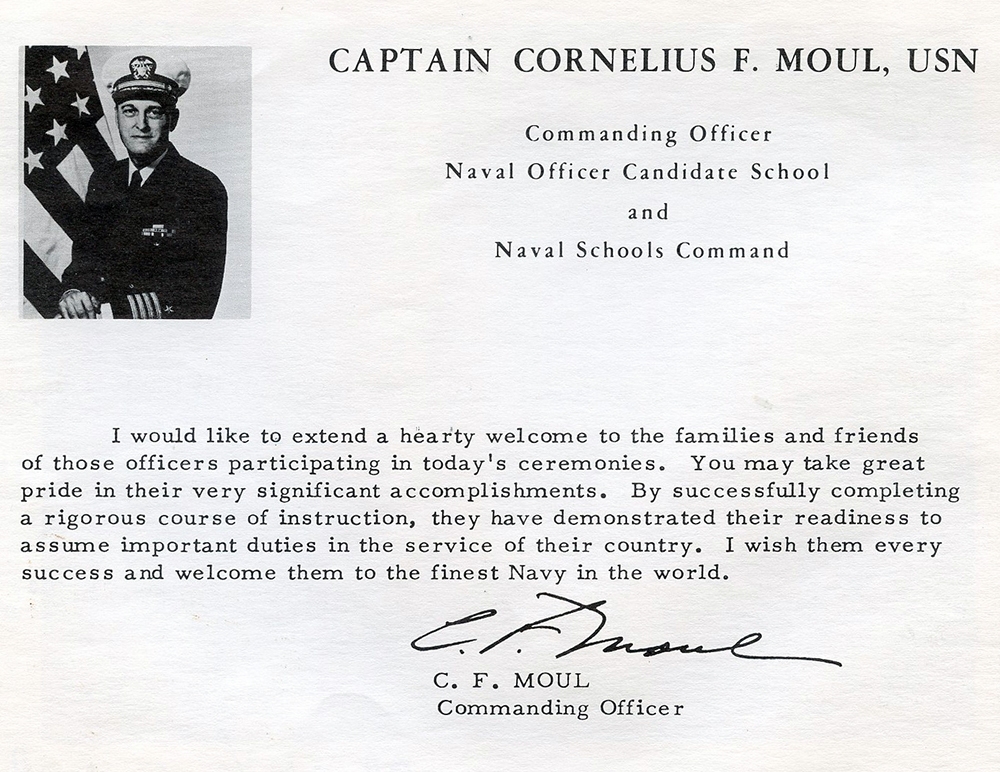
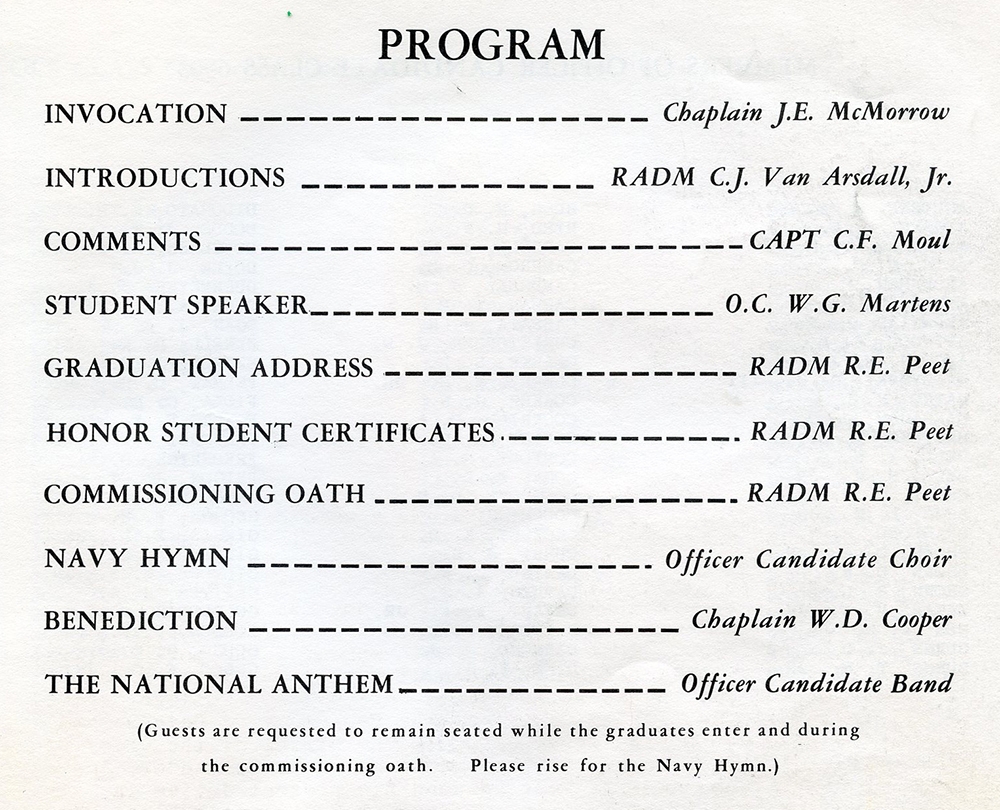
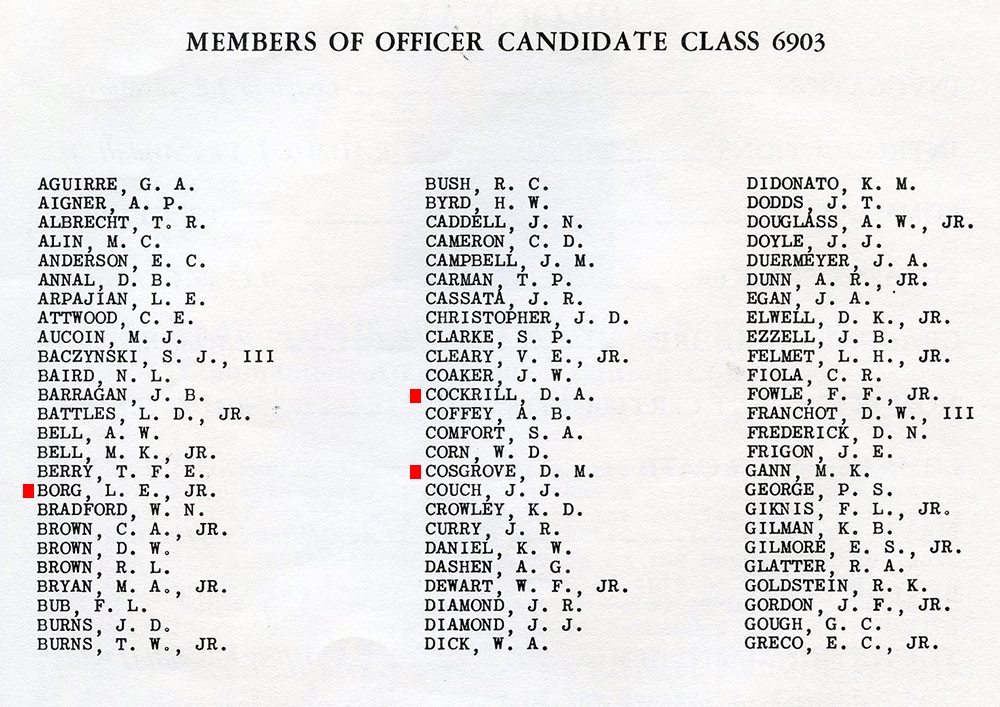
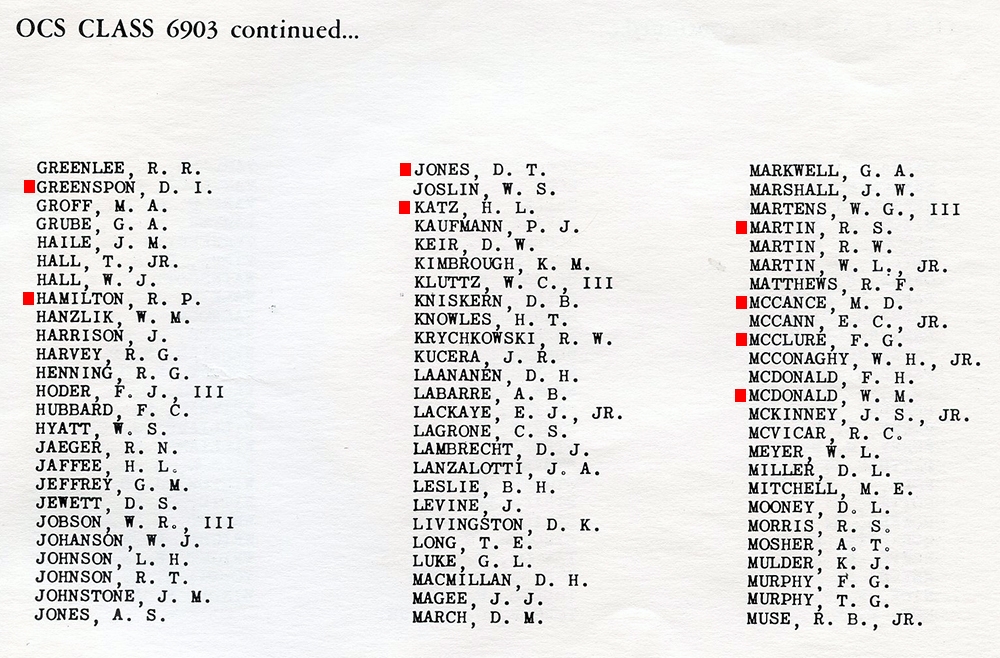
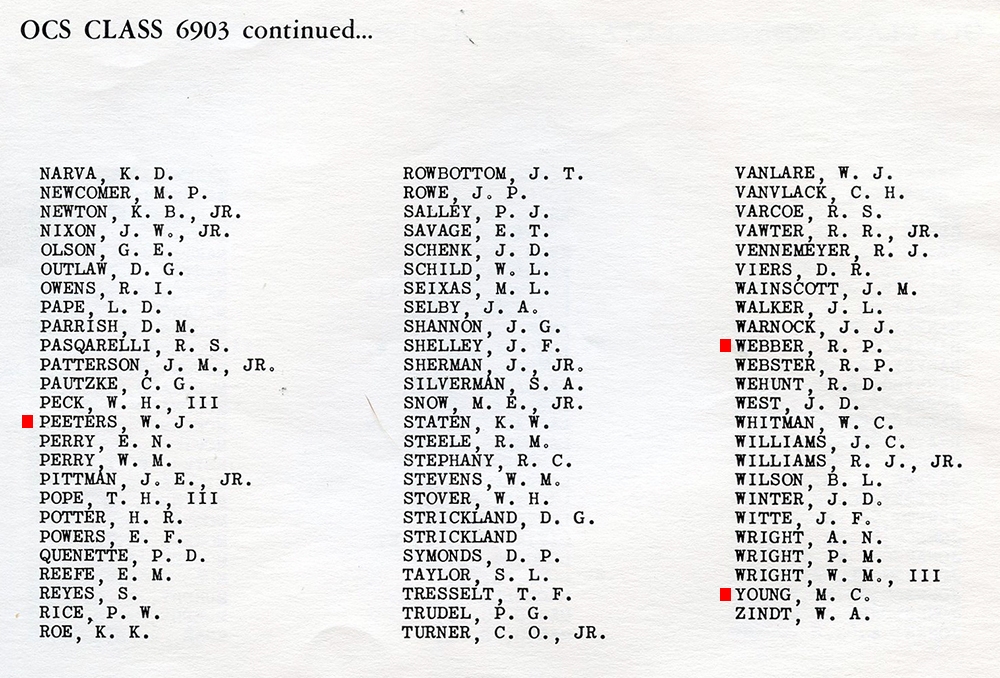


 At right is my commission. Under the title “The President of the United States of America” and the Seal of the United States, it reads: “To all who shall see these presents, greeting: Know Ye, that reposing special trust and confidence in the patriotism, valor, fidelity and abilities of William Michael McDonald I do appoint him a Reserve Officer in the grade of Ensign, Special Duty (Intelligence) United States Navy to rank as such from the Fourteenth day of February, nineteen hundred and Sixty-Nine. This Officer will therefore carefully and diligently discharge the duties of the office to which appointed by doing and performing all manner of things thereunto belonging. And I do strictly charge and require these Officers and other personnel of lesser rank to render such obedience is as due an officer of this grade and position. And this Officer is to observe and follow such orders and directions from time to time as may be given by me or the future President of the United States of America or other Superior Officers acting in accordance with the laws of the United States of America. This commission is to continue in force during the pleasure of the President of the United States of America for the time being, under the provisions of those public laws relating to Officers of the Armed Forces of the United States of America and the component thereof in which this appointment is made. Done at the City of Washington, this Second day of December in the year of our Lord one thousand nine hundred and Sixty-Eight, and of the Independence of the United States of America the one hundred and Ninety-Third. — Effective: Date Accepted — By the President: Charles K. Duncan Vice Admiral, U.S. Navy Chief of Naval Personnel — Paul R. Ignatius Secretary of the Navy.”
At right is my commission. Under the title “The President of the United States of America” and the Seal of the United States, it reads: “To all who shall see these presents, greeting: Know Ye, that reposing special trust and confidence in the patriotism, valor, fidelity and abilities of William Michael McDonald I do appoint him a Reserve Officer in the grade of Ensign, Special Duty (Intelligence) United States Navy to rank as such from the Fourteenth day of February, nineteen hundred and Sixty-Nine. This Officer will therefore carefully and diligently discharge the duties of the office to which appointed by doing and performing all manner of things thereunto belonging. And I do strictly charge and require these Officers and other personnel of lesser rank to render such obedience is as due an officer of this grade and position. And this Officer is to observe and follow such orders and directions from time to time as may be given by me or the future President of the United States of America or other Superior Officers acting in accordance with the laws of the United States of America. This commission is to continue in force during the pleasure of the President of the United States of America for the time being, under the provisions of those public laws relating to Officers of the Armed Forces of the United States of America and the component thereof in which this appointment is made. Done at the City of Washington, this Second day of December in the year of our Lord one thousand nine hundred and Sixty-Eight, and of the Independence of the United States of America the one hundred and Ninety-Third. — Effective: Date Accepted — By the President: Charles K. Duncan Vice Admiral, U.S. Navy Chief of Naval Personnel — Paul R. Ignatius Secretary of the Navy.”

 The picture above shows action outdoors. I remember being on a hose crew advancing toward fire inside a structure (USS Buttercup?). My strongest memory is that I tried something I believe we were told prior to the exercise. I recall we were told that you could extract oxygen from the water in the hose through the surface of the hose by affixing your lips to the hose and breathing in. That seemed implausible, but I tried it during the exercise, when the smoke was particularly heavy, and I remember it being effective. (This also could well have been a joke pulled by NAVOCS enlisted, figuring some dumbass OCUI would try it.) I have seen nothing online since to support the notion that one can do this. Again, I’m thankful I never had to resort to it.
The picture above shows action outdoors. I remember being on a hose crew advancing toward fire inside a structure (USS Buttercup?). My strongest memory is that I tried something I believe we were told prior to the exercise. I recall we were told that you could extract oxygen from the water in the hose through the surface of the hose by affixing your lips to the hose and breathing in. That seemed implausible, but I tried it during the exercise, when the smoke was particularly heavy, and I remember it being effective. (This also could well have been a joke pulled by NAVOCS enlisted, figuring some dumbass OCUI would try it.) I have seen nothing online since to support the notion that one can do this. Again, I’m thankful I never had to resort to it. One of our perhaps least favorite evolutions was inoculation. Shots. Periodically, we would go en masse to a location where Navy corpsmen, armed with “jet injectors,” would immunize us against a wide variety of diseases. Yellow fever, rubella, mumps, flu, etc. I remember feeling a bit disquieted when I saw that I was being inoculated against plague. Where would the Navy send me that I would need protection against plague?!
One of our perhaps least favorite evolutions was inoculation. Shots. Periodically, we would go en masse to a location where Navy corpsmen, armed with “jet injectors,” would immunize us against a wide variety of diseases. Yellow fever, rubella, mumps, flu, etc. I remember feeling a bit disquieted when I saw that I was being inoculated against plague. Where would the Navy send me that I would need protection against plague?!

 The “O Course” at NAVOCS was pretty traditional, as I recall. I doubt I was proficient at it, especially early, but I don’t remember being stymied by any particular part of it. I’m not saying I liked it, but I don’t recall it as a real nemesis. We also probably had limited access to it, because winter made conditions very different from those in photo at right.
The “O Course” at NAVOCS was pretty traditional, as I recall. I doubt I was proficient at it, especially early, but I don’t remember being stymied by any particular part of it. I’m not saying I liked it, but I don’t recall it as a real nemesis. We also probably had limited access to it, because winter made conditions very different from those in photo at right.
 First, of course, came the uniform. White leggings for all, sword belts and swords for regimental officers, and white belts for the rest of us. If you weren’t carrying a sword or guidon, you carried a “vintage” rifle. The M1 Garand had been the standard service weapon for US forces in WWII and the Korean War.
First, of course, came the uniform. White leggings for all, sword belts and swords for regimental officers, and white belts for the rest of us. If you weren’t carrying a sword or guidon, you carried a “vintage” rifle. The M1 Garand had been the standard service weapon for US forces in WWII and the Korean War.
 At some point, we had been instructed to order a sword. I don’t believe I ever used mine at NAVOCS, but Don Cockrill did as company commander and Harvey Katz as assistant regimental commander. (I did wear mine at a few ceremonies on active duty. I also remember that a few years after active duty, alone at home and hearing a noise downstairs, I brandished it against a possible intruder. Nobody there.)
At some point, we had been instructed to order a sword. I don’t believe I ever used mine at NAVOCS, but Don Cockrill did as company commander and Harvey Katz as assistant regimental commander. (I did wear mine at a few ceremonies on active duty. I also remember that a few years after active duty, alone at home and hearing a noise downstairs, I brandished it against a possible intruder. Nobody there.)



 Some could consider this duty as similar to that of a clerk at a hotel. This duty took place in the lobby, for us anyway, of Nimitz Hall. It was likely for four hours as were most Navy watches, but I believe it would have been only in the late afternoon and evening and maybe weekends, because we had class and other activities.
Some could consider this duty as similar to that of a clerk at a hotel. This duty took place in the lobby, for us anyway, of Nimitz Hall. It was likely for four hours as were most Navy watches, but I believe it would have been only in the late afternoon and evening and maybe weekends, because we had class and other activities.


 Form up. Clothing issue. Working blues. Boonies. Boonie powder. Haircuts. Covers. Smiles. Reefers. Two-blocked. Inspections. Tucks. Loose material. Low quarters. PT. Square your corners. Shots. Eagles flying. Lockers. Small store. Steamers. Parallel rulers. OO-ahs. Gear adrift. Dust. Pelican hook. Pop quiz. Super jock. Masking tape. MOD. Column by files. 7-Bravo. Maneuvering board. Barber shop. Wind. Swimming tower. Jump! Snatch block. I and C interviews. RYBWG. Cotton balls. OTUs. Fitting. Squared away. OOD yeoman. Laundry trucks. First liberty. Viking. Section leader. On the gouge.
Form up. Clothing issue. Working blues. Boonies. Boonie powder. Haircuts. Covers. Smiles. Reefers. Two-blocked. Inspections. Tucks. Loose material. Low quarters. PT. Square your corners. Shots. Eagles flying. Lockers. Small store. Steamers. Parallel rulers. OO-ahs. Gear adrift. Dust. Pelican hook. Pop quiz. Super jock. Masking tape. MOD. Column by files. 7-Bravo. Maneuvering board. Barber shop. Wind. Swimming tower. Jump! Snatch block. I and C interviews. RYBWG. Cotton balls. OTUs. Fitting. Squared away. OOD yeoman. Laundry trucks. First liberty. Viking. Section leader. On the gouge.


 Lenny Borg, who had some pretty good guns for upper arms, as I recall, was our ringer in the rope climb. “Each week, I had only the scantest of leads when reaching the top of the rope,” he recalled, “but somehow I could descend twice as fast as anybody else. Lucky I didn’t lose my grip and break my tailbone.”
Lenny Borg, who had some pretty good guns for upper arms, as I recall, was our ringer in the rope climb. “Each week, I had only the scantest of leads when reaching the top of the rope,” he recalled, “but somehow I could descend twice as fast as anybody else. Lucky I didn’t lose my grip and break my tailbone.”
